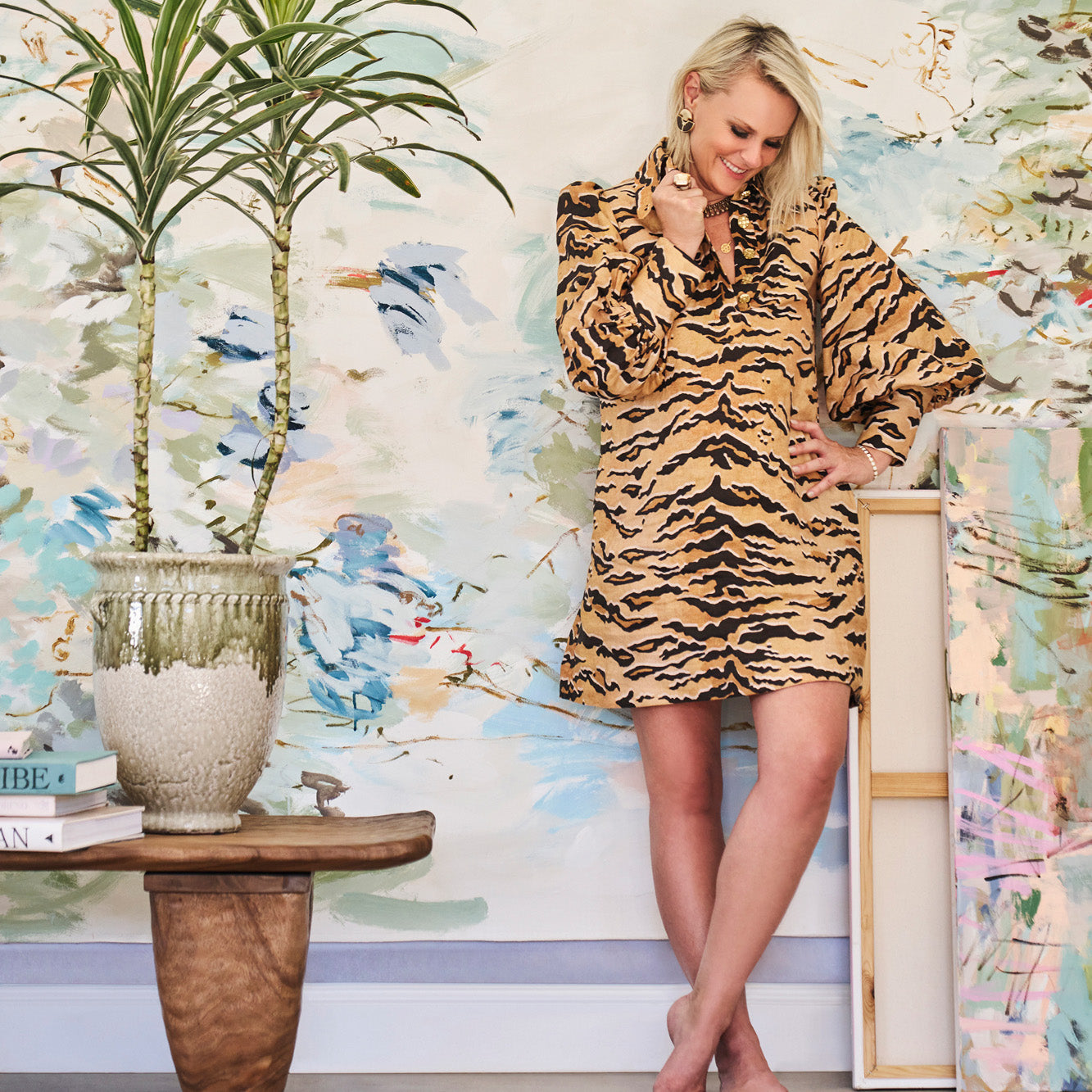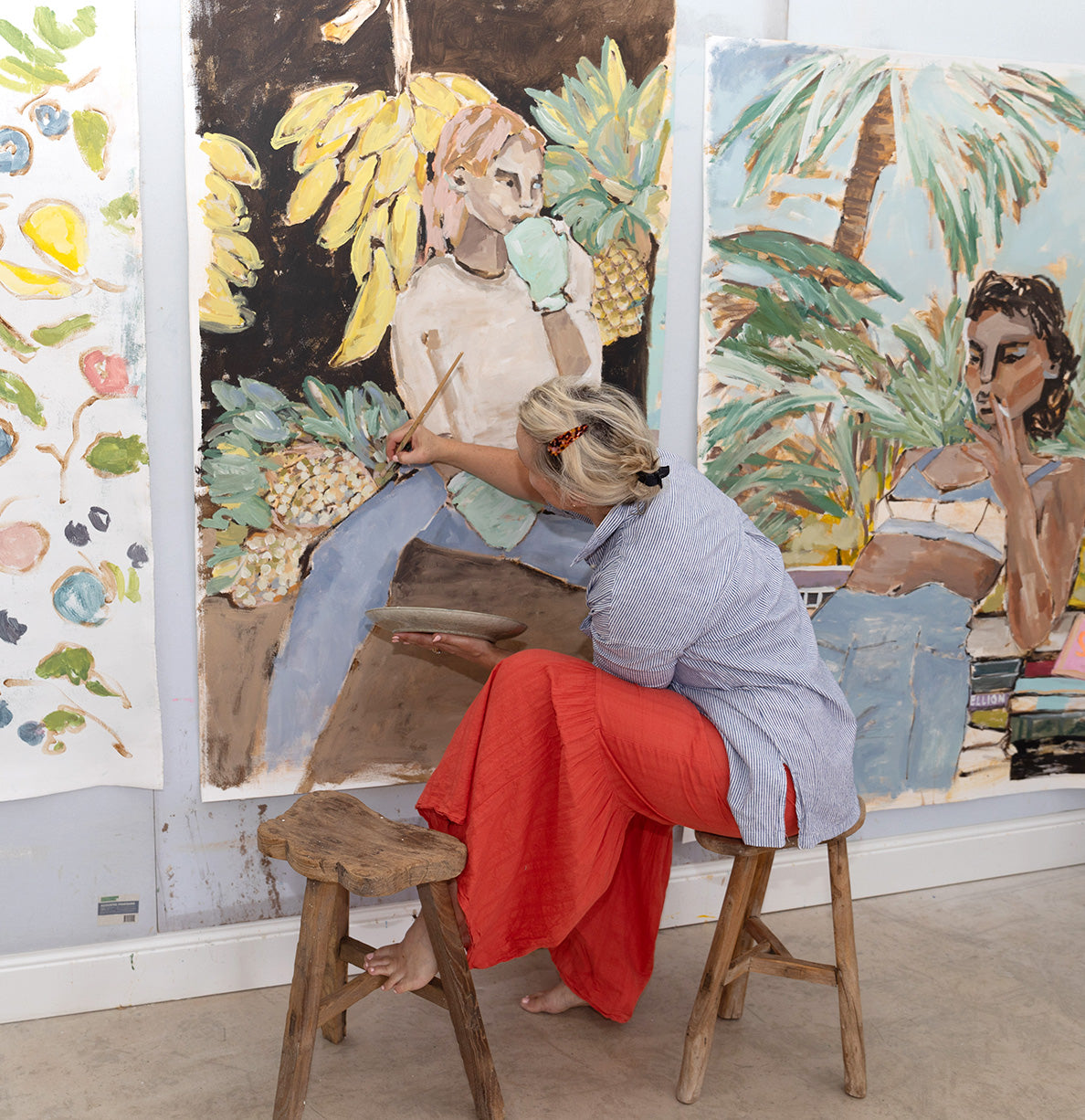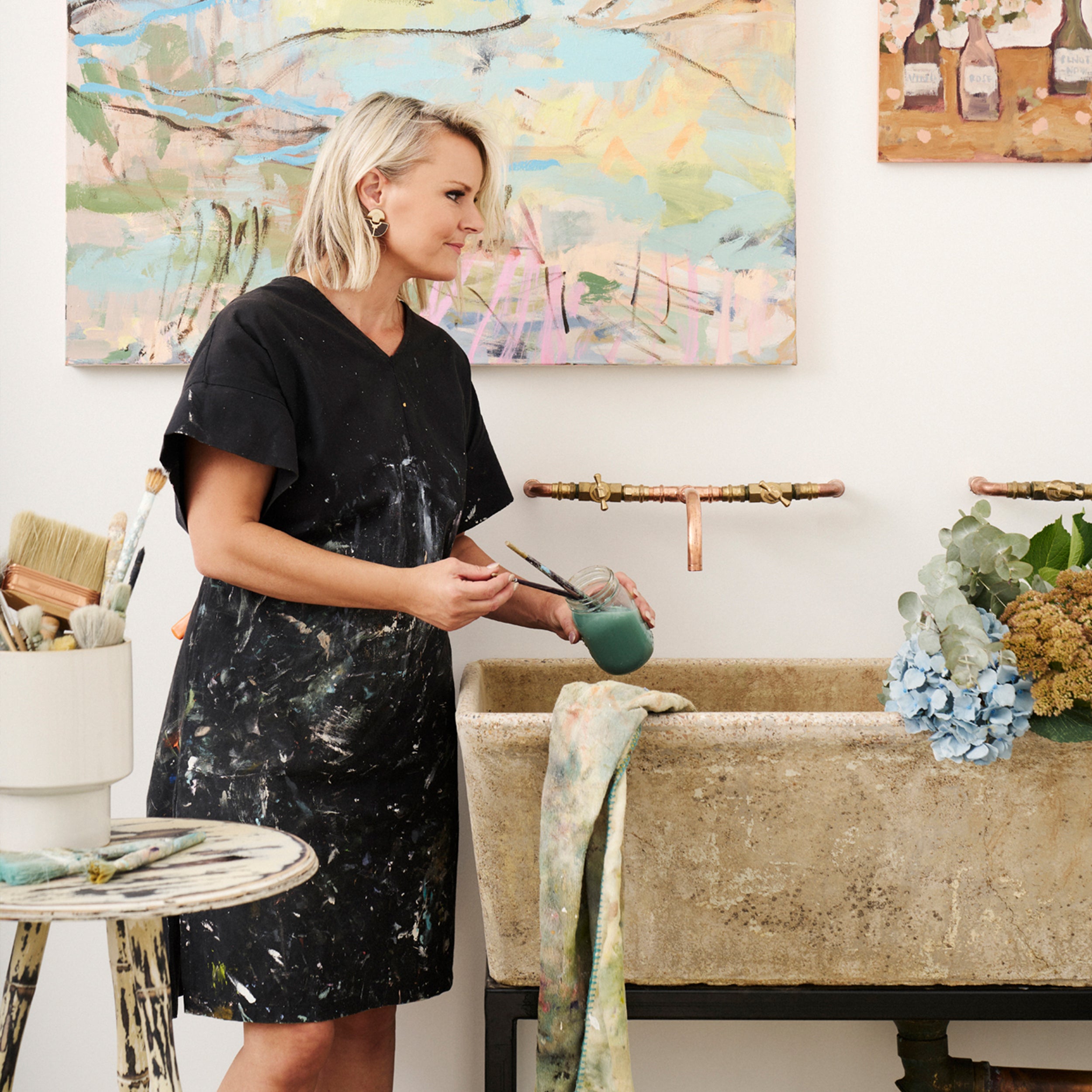
Marcia Priestley
Marcia Priestley is a lifelong creative whose practice is grounded in curiosity, reinvention, and a deep engagement with the act of making. Before dedicating herself fully to painting, she established a successful career in interior design—an experience that continues to inform her sensitivity to space, texture, and form. Her creative path has always been expansive and evolving, moving seamlessly between disciplines and driven by an instinctive desire to explore new terrains, whether through visual art, design, or the prospect of future ventures that merge creativity and wellbeing.
Priestley’s work has gained international recognition, appearing on Magnolia Network USA (Design Down Under, Season 2), represented in RH (USA/Europe), Greenhouse Interiors, and featured in select galleries worldwide. Yet despite this reach, her practice remains deeply personal—rooted in a tactile, intuitive process and an enduring fascination with emotion, place, and memory.
Based in central Victoria, Priestley lives and works surrounded by rugged bushland, where her studio opens out to a horizon of gum trees and shifting light. This environment infuses her work with a grounded energy—an unfiltered connection to nature and rhythm. Between painting and hiking, she continues to pursue the boundless spirit that defines her career: a life devoted to art, curiosity, and the endless pursuit of creative freedom.

My Work
Marcia Priestley’s practice is distinguished by its intuitive rhythm and emotional honesty. Her body of work resists categorisation, shifting fluidly between abstraction and figuration, landscape and gesture. Each painting begins without a predetermined outcome—an open conversation between artist, material, and mood. Guided by instinct rather than structure, Priestley’s process unfolds as an act of emotional navigation, where each brushstroke traces a momentary feeling or impulse. What begins as one idea—a landscape, perhaps—may dissolve and reconfigure into another, revealing the mutable nature of perception and emotion.
Her approach to painting is notably fluid, embracing the unpredictable behaviour of her materials. Paint is allowed to flow, drip, and merge freely across the surface, sometimes pushed by a brush, other times by hand or unconventional tools. Layers build organically; washes and textures interlace in a choreography of control and release. Imperfection is not resisted but celebrated, becoming a record of movement and mood. The resulting works hover between abstraction and recognition, characterised by blurred edges, organic forms, and a palpable sense of energy.
Priestley’s paintings embody the immediacy of intuition—each one a visual pulse of a particular moment in time. They feel spontaneous yet deeply considered, capturing the alchemy of emotion transformed through gesture, texture, and colour.

The Studio
Marcia Priestley’s studio, nestled beside the Australian bush, serves as both sanctuary and catalyst—a meeting point between the untamed and the intuitive. The surrounding landscape hums with life: kangaroos graze at the edge of view, the light shifts through the trees, and the atmosphere carries an unspoken rhythm that seeps into her work. Inside, the studio is a world of creative flux—paint-splattered surfaces, brushes mid-motion, a cat and dog in quiet attendance. It is a space that mirrors her process: alive, unstructured, and deeply responsive to mood and moment.
Here, intuition is the guiding force. Each session begins as an open experiment, a search for energy or emotion rather than outcome. Priestley’s approach embraces the rawness of process—the act of painting as both release and reflection. In this space, discipline gives way to instinct, and the boundaries between life and art dissolve.
Her practice becomes a metaphor for the life she leads—expansive, imperfect, and beautifully unresolved. The studio stands as a living canvas, where the artist continually negotiates the tension between stillness and creative urgency, producing work that feels at once personal and universal, grounded and transcendent.
